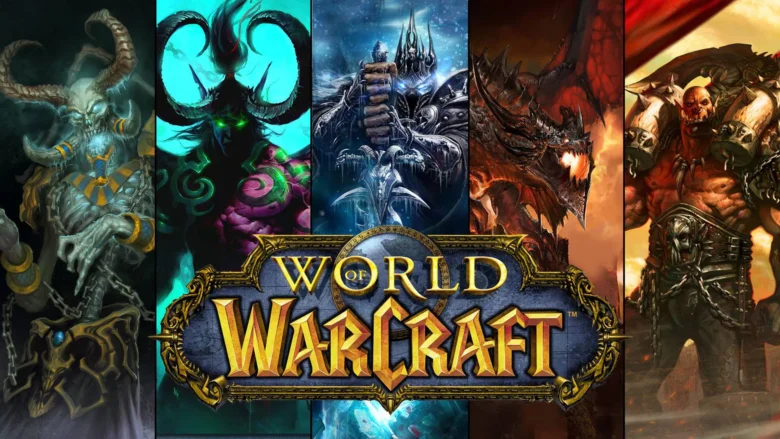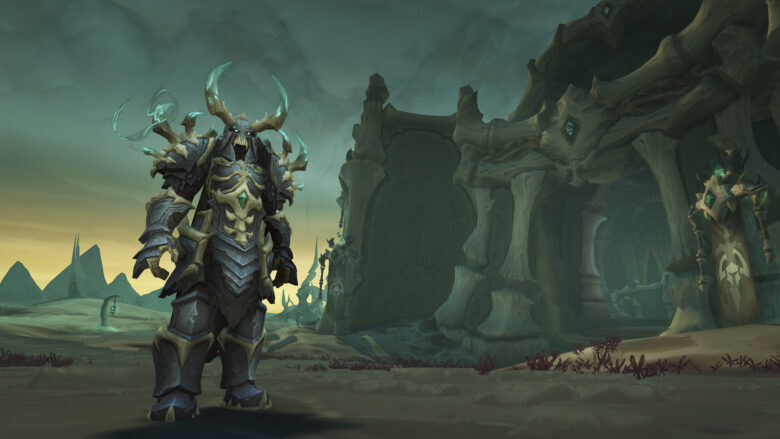World of Warcraft is a game that has transformed from a virtual fantasy landscape into a global phenomenon. From the desolate wastelands of Northrend to the lush forests of Elwynn, WoW has captivated millions of players around the world since its launch in 2004. But what psychological mechanisms does the game employ to keep players hooked nearly two decades after its release? In this article, we delve deep into the psychology of WoW, exploring the fascinating strategies that the game employs to capture and retain its player base.
The Role of Community and Social Interaction
1. Social Bonds and Cooperative Gameplay
Humans are naturally social beings. We thrive on interaction, cooperation, and competition. World of Warcraft taps into these instincts, providing players with ample opportunities to work together or pit their skills against one another. The game encourages the formation of guilds and parties, enabling players to team up and tackle the game’s challenges together. This cooperative gameplay fosters strong bonds and friendships that extend beyond the game’s boundaries. The social bonds formed within the WoW community keep players returning to the game, making it much more than just a solo adventure.
2. Identity Formation and Role-playing
Beyond the immediate social interactions, WoW also addresses the psychological aspects of identity formation and role-play. The game offers players the chance to create unique avatars, each with its own race, class, and customization options. This freedom to design a character encourages self-expression and identity exploration. The variety of roles available in WoW feeds into our inherent curiosity and desire for novelty. This diversity of identities and experiences enables players to step out of their comfort zones, stimulating continued engagement with the game.
The Power of Reward Systems

Source: ecranpartage.ca
1. Immediate Gratification and Variable Ratio Reinforcement
World of Warcraft has perfected the art of reward systems. The game leverages the psychological concept of “variable ratio reinforcement,” where rewards are given out at variable rates. This principle is the backbone of WoW’s loot system. The game keeps players on their toes, never knowing when or where they will stumble upon rare gear or valuable items. This unpredictability creates a sense of suspense and thrill, making each quest or dungeon run feel like a potential jackpot.
However, not everyone has the time to delve into every nook and cranny of Azeroth in search of these rewards. This is where services like WowVendor come into the picture, providing a way for players to expedite their progress, acquire powerful gear and level up their characters through WoW boosting, offering a faster route to experiencing the richness of WoW’s reward systems.
2. Long-term Goals and Achievement Systems
While WoW is adept at offering immediate gratification through its variable ratio reinforcement, it doesn’t stop there. The game also caters to our deep-seated need for growth and progress by setting long-term goals for players. Whether it’s leveling up your character, obtaining a rare mount, or completing a challenging raid, these overarching objectives provide a sense of direction and purpose. This constant push towards achievement helps maintain player engagement over extended periods.
The Allure of Escapism
1. Immersive World Design
A major contributing factor to WoW’s popularity is its immersive world design. The game offers an expansive universe with diverse landscapes, races, and cultures. This richly detailed world provides a form of escapism, enabling players to explore a realm far removed from their everyday realities. The extraordinary environments and intricate lore captivate players, satisfying our intrinsic need for novelty and exploration.
2. Narratives and Emotional Engagement
Narrative plays a significant role in the player’s emotional engagement with WoW. The game’s plotlines are deep and intricate, with a vast array of characters each having their own motivations, strengths, and flaws. As players progress through the game, they become emotionally invested in these characters and their stories, further intensifying the sense of immersion.
Balancing Real Life and Gaming
As captivating as WoW may be, it’s crucial for players to strike a balance between their virtual adventures and real-life responsibilities. While the game offers a rewarding and immersive escape from the pressures of everyday life, it’s essential to remember that our real-world connections, responsibilities, and personal well-being should not be overlooked.
Understanding Game Mechanics

Source: mashable.com
1. Risk and Reward in Gameplay
The psychology of WoW extends into its gameplay mechanics as well. The game carefully balances risk and reward, encouraging players to step outside their comfort zones. Whether it’s venturing into a high-level area or taking on a challenging boss, WoW taps into the thrill of risk-taking. Overcoming these challenges leads to a sense of achievement, reinforcing the game’s reward system.
2. The Flow State in Gaming
A fascinating psychological aspect of WoW is how it taps into what psychologists refer to as “the flow state.” This is a mental state in which a person is fully immersed in an activity and loses the sense of time. WoW achieves this by providing challenging, yet achievable goals, and instant feedback, two key ingredients necessary for inducing flow. By immersing players in a flow state, WoW ensures that they lose track of time, thereby prolonging engagement.
Psychology of Character Design and Aesthetics
1. Engaging Players through Aesthetics
Beyond its gameplay mechanics, WoW also employs psychology in its character and world design. Research in psychology has shown that aesthetics can have a significant impact on our mood, emotions, and engagement levels. WoW takes advantage of this by offering visually appealing environments, detailed character designs, and engaging sound effects and music. The high level of aesthetics contributes to the overall immersive experience, keeping players hooked.
2. The Importance of Choice in Character Design
In terms of character design, WoW gives players a myriad of choices in customizing their avatar. This includes choices of race, class, and appearance. By allowing players to create a character that aligns with their personal preferences or desired self-image, WoW enhances the emotional connection between the player and their avatar, thereby increasing player engagement.
The Impact of Competitive Play

Source: justf.org
World of Warcraft isn’t just about cooperation and questing; it also involves competitive play. Whether it’s in player-versus-player (PvP) battlegrounds or in competitive ranking systems, the desire to outperform others is a powerful motivator. This taps into the psychological principle of competence, the need for mastery and improvement, which further hooks players into the game.
Conclusion
World of Warcraft’s success is no accident; it’s a result of a careful study of human psychology interwoven with engaging game design. By understanding our needs for social interaction, identity exploration, rewarding experiences, and escapism, WoW has managed to craft a gaming experience that continues to captivate millions of players around the world. As technology advances and our understanding of psychology deepens, the lessons learned from WoW will undoubtedly continue to shape the gaming industry for years to come.

